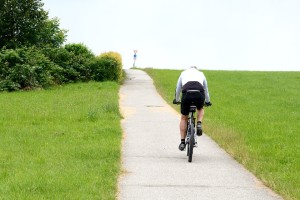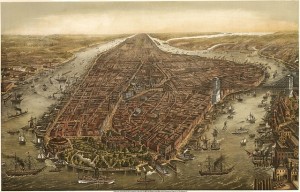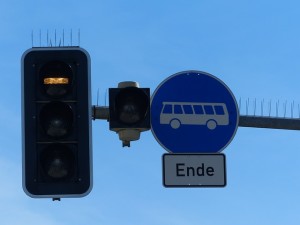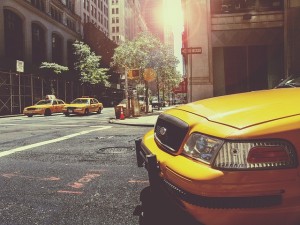 At the Seventh Avenue bike lane at Times Square, the Department of Design and Construction (DDC) has now built a part that is raised. Now the department is also constructing permanent pedestrian plazas and other enhancements to the street on Times Square. Right now though, the only part of the lane that is raised is between 45th and 46th Street. This acts as a detour for cyclists who want to use Broadway bike lane. It enables them to bypass pedestrian plazas.
At the Seventh Avenue bike lane at Times Square, the Department of Design and Construction (DDC) has now built a part that is raised. Now the department is also constructing permanent pedestrian plazas and other enhancements to the street on Times Square. Right now though, the only part of the lane that is raised is between 45th and 46th Street. This acts as a detour for cyclists who want to use Broadway bike lane. It enables them to bypass pedestrian plazas.
According to the Department of Transport, this is just the beginning. The aim is ultimately to direct the cyclists to the eastern side of 7th. Between 46th and 47th Street, only sharrows (shared lane markings). Then, there will be a lane extension from 42nd to 46th Street. However, it seems that in NYC raised bike lanes are quite an anomaly, other than the block between Navy and Gold, by the Manhattan Bridge.
In general, cycling in New York has developed a reputation for being a somewhat dangerous activity. Nevertheless due to the difficulty and congestion of other modes of transport, it continues to be used as a popular way to get around, especially by delivery workers. Because they are known to be somewhat speedy movers, there have been many laws enacted to try to maintain driver safety over the years. For instance, in 2007 helmets became mandatory and five years thereafter it became law for “delivery cyclists to take a safety course and wear vests identifying themselves and their employers.”
Still, this issue is more related to motorbike street drivers rather than non-motor cyclists. Nonetheless, the introduction of split-phase signals – deemed by CB4 as being safer – brings with it a “doubling” of the improvement on streets that mostly received mixing zones.”
The evidence backs up CB 4’s assertion that split-phase signals are safer. Data from previous protected bike lane projects in Manhattan show that the reduction in injuries on streets that mostly received split-phase treatments was more than double the improvement on streets that mostly received mixing zones. (“C-B4 provides powerful and precise predictive analytics solutions in the simplest and most straightforward manner, going from data to predictions, recommendations and insights that can be understood and ACTED UPON by decision makers.”)



